|
A Chronology of the United States Postal Inspection Service
Click here for printer-friendly version
| 1737 |
Benjamin Franklin, as the Postmaster at Philadelphia, is assigned the additional duties of "regulating the several Post Offices and bringing the Officers to account." This is the forerunner of the duties of a Postal Inspector. |
 |
| 1772 |
Under the colonial postal system, Postmaster General Benjamin Franklin creates the new position of “Surveyor” to handle regulating Post Offices and auditing postal accounts. Surveyors become the first Postal Inspectors, and are also required to investigate thefts of mail or postal funds, often by a rider, innkeeper or other person entrusted with the US Mail. |
|
| 1775 |
William Goddard becomes the first Surveyor of the new American postal service. August 7, 1775 – the earliest recorded date of his service under the Second Continental Congress, is established as the birth date of the United States Postal Inspection Service.

|
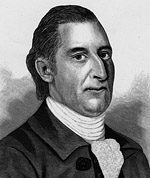 |
| 1792 |
Congress imposes the death penalty for stealing mail. |
|
| 1801 |
Title of Surveyor changed to Special Agent. |
|
| 1812 |
Special Agents observe and report on movements of the British fleet on the Potomac River during the War of 1812.
(Image Courtesy: warfarehistorynetwork.com)
|
 |
| 1828 |
Noah Webster, one of the first Surveyors, publishes his dictionary. |
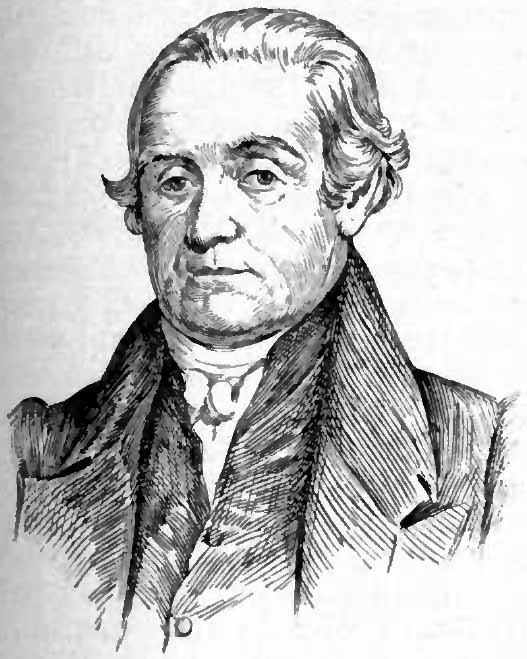 |
| 1830 |
A separate Office of Instructions and Mail Depredations was formed to be the investigative and inspection branch of the Post Office Department. By then, laws and regulations were being enacted by Congress which made certain violations against the United States postal system federal crimes. |
|
| 1835 |
Preston S. Loughborough is placed in charge of this new branch which was the predecessor to the Office of the Chief Postal Inspector. |
 |
| 1853 |
The number of Special Agents grows to 18. Assigned to specific territories, their duties include reporting on the conditions of horses, stagecoaches, railroads, steamboats and other conveyances used to transport the mail; visiting mail distributing offices; and examining postal accounts. |
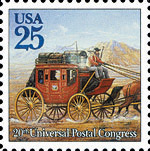 |
| 1861 |
Special Agents supervise the transportation and delivery of mail to Union troops during the Civil War. |
|
| 1872 |
Mail Fraud Statute is enacted by Congress to combat a rash of swindles by mail which erupted after the Civil War. |
|
| 1873 |
Congress enacts the Postal Obscenity Statute based on the urging of Special Agent Anthony Comstock. |
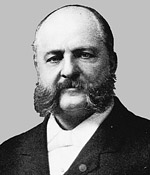 |
| 1874 |
The total number of Special Agents jumps to 63; to improve organizational effectiveness, the country is divided into six divisions each headed up by a Special Agent. |
|
| 1880 |
Special Agents become known as Post Office Inspectors after a law is passed by Congress. The change is to differentiate the federal postal agents from the multitude of other “special agents” employed by railway and stagecoach companies. |
 |
| 1880 |
“Green Goods” swindles are exposed. Congress strengthens the Mail Fraud statute to protect citizens from bogus offers in the mail. |
|
| 1881 |
Inspectors interview “Billy the Kid” in connection with a mail robbery in Santa Fe, NM. |
|
| 1888 |
Total number of Inspectors grows to 75 spread out over 12 divisions. Inspectors now placed under new Civil Service system. |
|
| 1898 |
Postal Inspector John Clum is appointed as special commissioner to Alaska "to examine into postal affairs." During the Gold Rush, Clum established Post Offices throughout the Alaska Territory. |
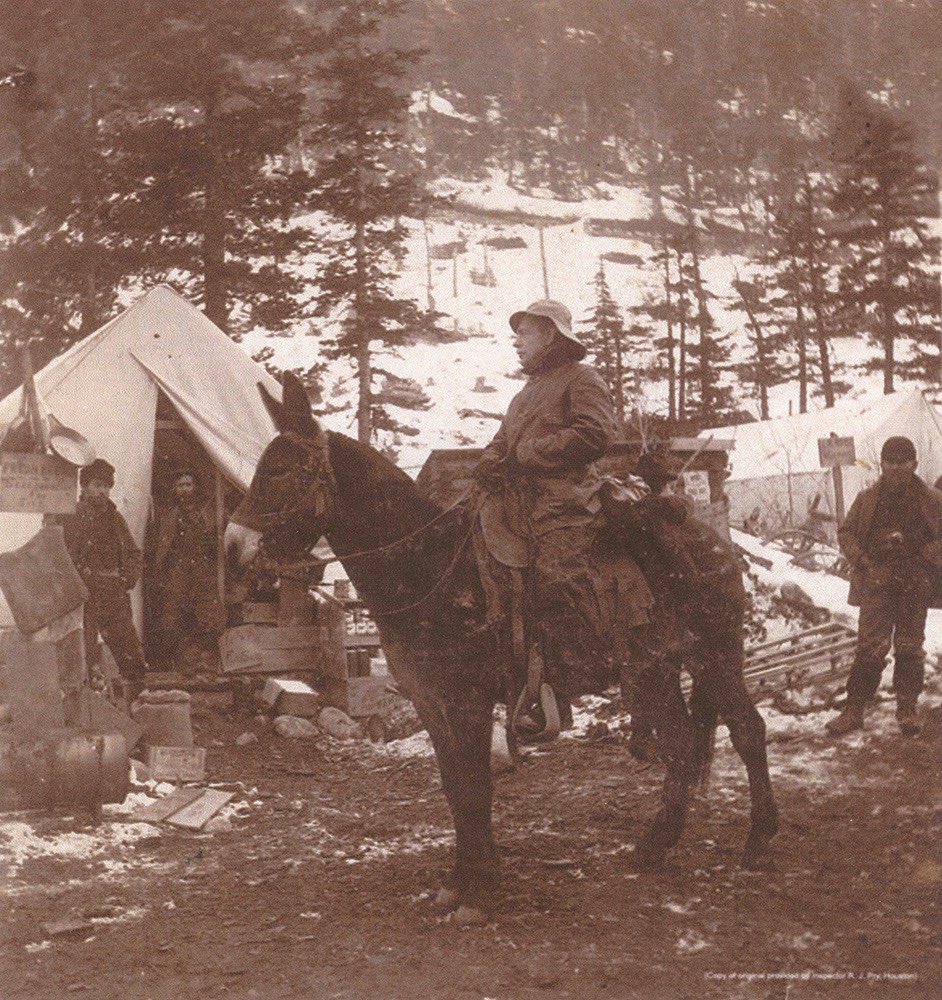 |
| 1908 |
Post Office Inspector Charles Fitzgerald is gunned down in Clinton, MS, becoming the first Inspector killed in the line on duty. |
|
| 1909 |
Inspectors investigate the “Black Hand,” a secret society of criminals who extort money from Italian immigrants by sending them threatening letters. Fourteen members are arrested and convicted. |
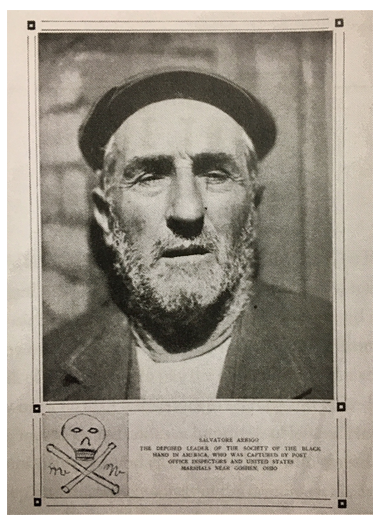 |
| 1916 |
The last known robbery of a horse-drawn mail stage in the U.S. is investigated and solved by Post Office Inspectors in Jarbidge, NV. The bandits, who stole $3,000 from the mail and murdered the driver, were arrested within five days of the crime. |
 |
| 1920s |
Post Office Inspectors become the first federal law enforcement officers to carry the Thompson submachine gun — the Tommy gun -- one of the most widely recognized firearms in the world to combat the rash of mail train robberies. Trains transported high value mail shipments, such as diamonds, increasing the need to protect valuables sent through the mail.
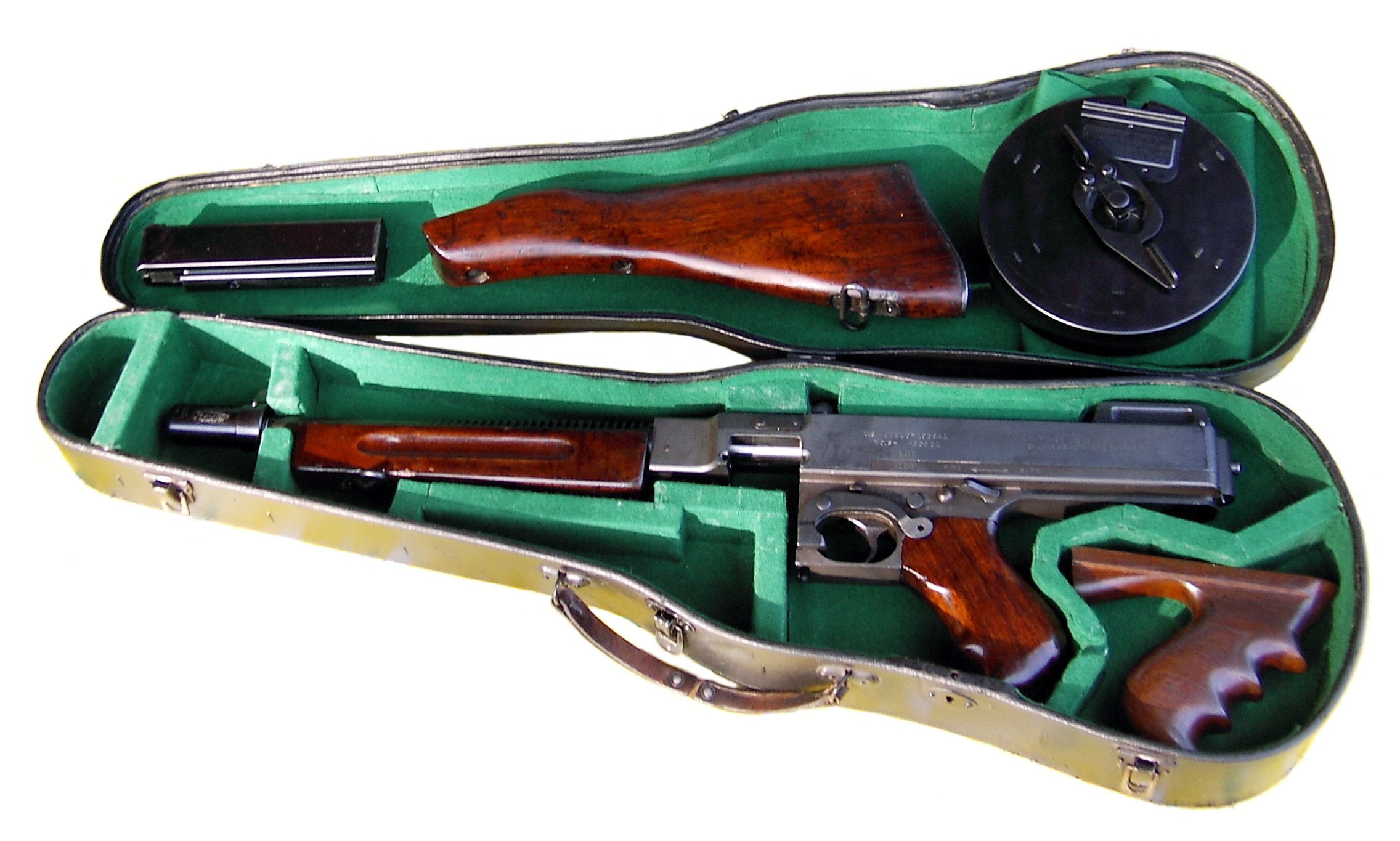
(By C. Corleis [GFDL or CC-BY-SA-3.0], from Wikimedia Commons)
|
 |
| 1920 |
Charles Ponzi, the father of the illegal pyramid scheme, is investigated by Inspectors, who help convict him. Ponzi promised a fifty percent return on investments. Only the earliest investors profited because they were paid from funds collected from later investors. |
 |
| 1921 |
Gerald Chapman and Dutch Anderson, who became the first “Public Enemy #1,” robbed a U.S. Mail truck in New York City. They made off with over $2 million, making it the largest U.S. robbery of the time. Inspectors captured the two robbers. Convicted, they each received 25-year sentences, but escaped from a federal prison in Atlanta in 1923. |
 |
| 1926 |
Inspectors successfully conclude a 3 ½ year worldwide manhunt for three men, the DeAutremont brothers, who robbed a mail train in the Siskiyou Mountains of Oregon. The brothers killed four men and blew up the mail car, which they mistakenly thought was carrying $500,000 in gold. All three were convicted and sentenced to life in prison. |
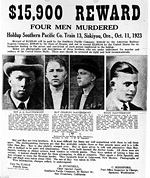 |
| 1936 |
“Public Enemy #1” Alvin Karpis is arrested by Inspectors and local police for the spectacular machine-gun holdup of an Erie Railroad mail train at Garrettsville, OH. |
|
| 1937 |
Between 1937 and 1941, more than 500 railroad cars carry $15.5 billion in gold by registered mail between New York and Fort Knox. Inspectors were responsible for all the plans for the movement and protection of the gold. The Post Office Department earned $1.8 million in postage and fees for the delivery. |
 |
| 1939 |
With more than 600 Postal Inspectors on the rolls, a separate Bureau of the Chief Inspector is established with three investigative branches: Mail, Financial, and Administrative Investigations. |
|
| 1940 |
The first of five Postal Inspection Service forensic laboratories is established, in Washington, DC. |
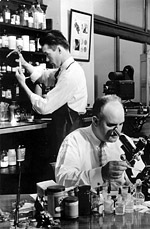 |
| 1941 |
During World War II, 247 Inspectors serving in the military services organize a mail system for the troops — the Army Post Offices (APOs) and the Fleet Post Offices (FPOs). The system is so effective that even front-line troops expect mail delivery as a normal procedure. What they established still remains as today’s military mail system. |
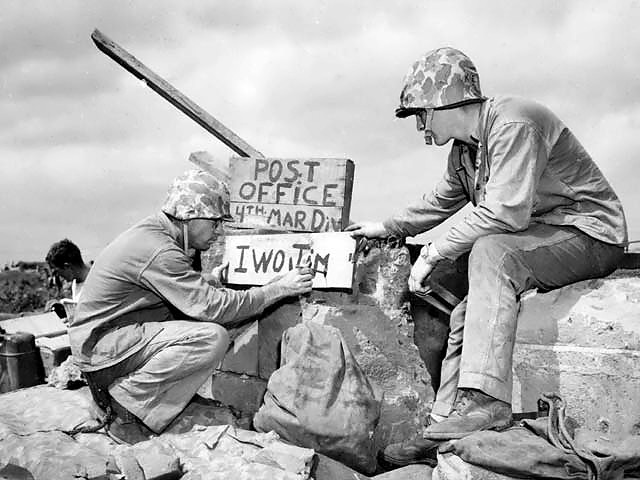 |
| 1940s |
Postal Inspector Robert Moon develops the idea for the Zone Improvement Program – the ZIP Code. He’s sometimes called "Mr. ZIP" and is considered the father of the ZIP Code that was implemented in 1964. |
|
| 1946 |
Recognizing the natural link between forensic technology and law enforcement, the number of Crime Laboratories grows to five to better support investigations. |
|
| 1947 |
Jesse M. Donaldson becomes the first Chief Postal Inspector to be appointed Postmaster General. |
|
| 1954 |
Post Office Inspectors are retitled “Postal Inspectors” to reflect their relationship to all phases of postal services and the U. S. Mail, instead of only to Post Offices. |
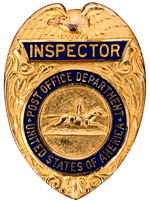 |
| 1955 |
First mail bomb explodes on board an aircraft and establishes need for Inspectors specially trained in bomb investigations. |
|
| 1957 |
Audit function transferred from Post Office Department to Bureau of Chief Inspector. |
|
| 1958 |
Owners of the Hope Diamond send the priceless jewel to the Smithsonian Institution by U.S. Mail. Postal Inspectors ensure that the gem arrives safely at its destination. |
|
| 1963 |
Postal Inspector Harry Holmes interviews Lee Harvey Oswald about mail order rifle used to assassinate President John F. Kennedy. Minutes later, Oswald is gunned down by Jack Ruby. |
 |
| 1970 |
With the Postal Reorganization Act of 1970, the Bureau of the Chief Postal Inspector now becomes the United States Postal Inspection Service. |
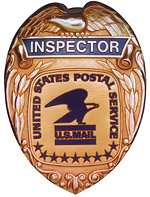 |
| 1971 |
A uniformed Security Force is added to assist in carrying out the Inspection Service’s security mission. The Security Force name is later changed to the Postal Police. |
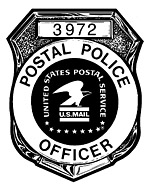 |
| 1971 |
The Postal Inspection Service becomes one of the first federal law enforcement agencies to hire female agents. |
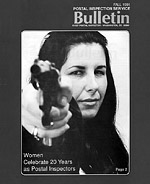 |
| 1972 |
Postal Inspectors and Crime Lab forensic scientists prove that a handwritten note giving author Clifford Irving exclusive rights to write Howard Hughes’ biography is a fraud. |
|
| 1984 |
The passage of the Child Protection Act gives Postal Inspectors additional powers to focus on child pornography distributors and their customers. Since 1984, Postal Inspectors have arrested thousands of child molesters and pornographers. |
|
| 1987 |
Postal Inspectors arrest Ivan Boesky and Michael Milken as part of a wide-spread insider trading case on Wall Street. |
|
| 1989 |
Jim Bakker, cofounder of the Praise the Lord (PTL) Club, is arrested by Postal Inspectors for mail fraud. Bakker scammed believers by using $178 million of their mailed-in money for personal gain. He is sentenced to 45 years in prison. |
 |
| 1991 |
The Postal Inspection Service breaks up a worldwide art fraud ring that marketed bogus prints purported to be signed by such renowned artists as Salvador Dali, Joan Miro, and Pablo Picasso. (Image Courtesy: www.freemanart.ca)
|
 |
| 1996 |
Postal Inspectors play an integral role on a multi-agency task force that arrests the Unabomber. From 1978 to 1996, a man named Ted Kaczynski mounted a campaign of terror through a series of bombs sent in the mail to university professors and airline and advertising executives, killing three and injuring 23. The arrest marks the end of one of the largest and most extensive criminal manhunts in modern history |
 |
| 1998 |
Showtime Network airs “The Inspectors,” the first movie about the Postal Inspection Service since the 1951 classic, “Appointment With Danger.” The movie is based on the 1991 Chugiak, Alaska mail bombing. |
 |
| 2000 |
A new Postal Inspection Service seal is created to represent all USPIS employees. The seal is incorporated into the Inspector and Postal Police badges. |
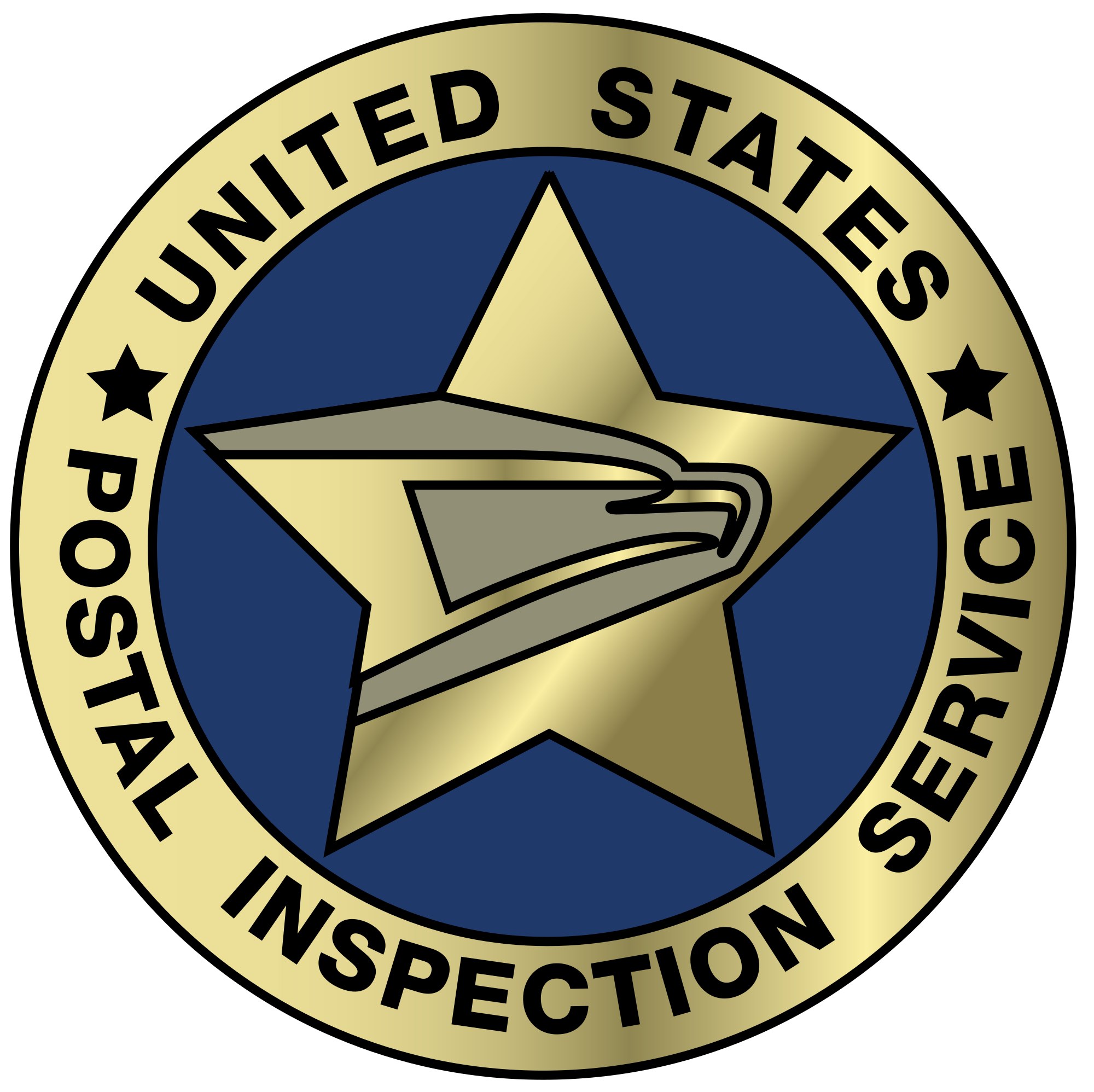 |
| 2001 |
Letters containing anthrax are mailed to media and congressional representatives, resulting in the deaths of two postal employees, three citizens and sickening 17 others, including a Postal Inspector. After a nine-year investigation with the FBI, a suspect was identified, but committed suicide before charges were brought. |
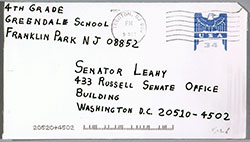 |
| 2012 |
Allen Stanford is sentenced to 110 years in prison for masterminding a $7 billion Ponzi scheme. For twenty years, Stanford lured investors to buy certificates of deposit in his offshore Stanford International Bank with the promise of high returns. Investigation by Postal Inspectors into the mailings led to his arrest and the end of the scam. |
|
| 2014 |
The Smithsonian Institution’s National Postal Museum opens a new exhibit, Behind the Badge, which spotlights the work of the U.S. Postal Inspection Service. |
 |
| 2015 |
CBS network premieres “The Inspectors,” a half-hour drama series on Saturday mornings. In its first season, the show captures the Daytime Emmy for Best Actor. |
 |
| 2017 |
An investigation by Postal Inspectors and the Department of Justice leads to Western Union and Money Gram agreeing to return almost $600 million to people victimized by money transfers to fraudulent foreign lottery, sweepstakes, online dating and advance fee scams. |
|
| 2017-2018 |
Mail bombs made a comeback in this one-year period. In the Fall of 2017 a package bomber in the San Francisco Bay Area sent two bombs that made it to the recipients and exploded, injuring two individuals. In March 2018 a series of six package bombs sent or placed in the Austin, TX area over a period of 19 days killed two and injured five. In the Fall of 2018, 16 mail bombs were identified and recovered by postal employees and law enforcement officers. The bombs were addressed to high profile political targets in Congress, the media and entertainment industry. In all three cases, Postal Inspectors played a key role in apprehending the bombers |
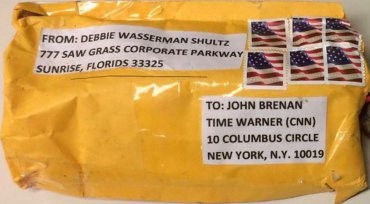 |
Text-only version of the Chronology of the U.S. Postal Inspection Service |